Products ranging from jewellery and watch cases to electronic components and toy paints may contain heavy metals such as lead, cadmium, and mercury. The European Union strictly regulates – and in some cases, prohibits – the usage of these substances, due to their toxicity.
In this article, we summarise several EU regulations and directives covering heavy metals, including REACH, the RoHS Directive, and the Toy Safety Directive.
Content Overview

FREE CONSULTATION CALL (US, EU & UK)
- Request a free 30-minute call with Ivan Malloci to learn how we can help you with:
- Find product requirements
- Certification and labeling
- Lab testing
What are heavy metals?
Heavy metals are generally defined as metals with relatively high densities, and that are deemed to be carcinogenic, poisonous and toxic, even in low concentrations. The toxicity of the heavy metals may depend on factors such as the dose, chemical species, and route of exposure.
A wide range of consumer products may contain various types of heavy metals. Here are some examples:
- Cosmetics
- Personal care products
- Food contact materials
- Toys
- Electronics
Heavy metals (e.g. lead) are also used in paints, dyes, and inks, in order to accelerate drying, increase durability, and delay corrosion. Further, they might already exist in the raw materials used to manufacture the products.
Here is a list of some of the most common and regulated heavy metals:
- Cadmium
- Chromium
- Lead
- Mercury
- Nickel

Are heavy metals banned in the European Union?
The European Union prohibits the use of certain heavy metals in some product categories, while others are restricted to a certain amount.
The EU enacted several regulations and directives that restrict or ban certain heavy metals in consumer products, including:
- REACH
- RoHS Directive
- Toy Safety Directive
- Cosmetics Products Regulation
- Food Contact Materials Regulations
The reason is that exposure to heavy metals might severely harm human health as well as the environment.
Note that lab testing is usually necessary to assess if your product contains any heavy metals, or other restricted substances, above the limits set by relevant regulations.
Examples
Here are a few examples of heavy metals and their impact on the human body:
Lead – Long-term exposure may cause developmental and neurobehavioural problems in fetuses, young infants, and children.
Mercury – Exposure may cause negative health effects such as kidney failure, cognitive impairment, and injury to the central nervous system.
Cadmium – Exposure may result in damage to the kidneys, bones, and lungs, as well as renal dysfunction and cancers of the breast and prostate.
Chromium – Bioaccumulation may cause lung cancers and DNA damage, as well as skin, renal, reproductive and neurological disorders.
REACH
The REACH Regulation restricts chemical substances such as heavy metals imported and manufactured in the EU. REACH also regulates articles that might contain these substances, as they might harm the consumer or the environment.
Product scope
REACH covers substances, mixtures, and articles. Here we list a few examples of such articles that fall under the scope of the regulation:
- Apparel and textiles
- Electrical appliances
- Furniture
- Cleaning products
SVHC
Substances of very high concern (SVHC) may seriously and irreversibly harm human health and the environment and, as such, are regulated. This includes substances that might be:
a. Carcinogenic, mutagenic, or toxic for reproduction.
b. Persistent, bioaccumulative, and toxic (PBT).
Heavy metals
The SVHC Candidate List contains several heavy metals, such as the following:
- Arsenic and its compounds
- Lead and its compounds
- Cadmium and its compounds
- Chromium and its compounds
Requirements
The ECHA requires importers and manufacturers of products containing SVHC in concentrations exceeding 0.1% w/w to:
a. Notify ECHA of the substance’s presence in their product by registering and entering the information into the SCIP (Substances of Concern In articles as such or in complex objects (Products)) database.
b. Notify consumers upon request.
Companies importing and manufacturing over 1 ton per year of SVHCs must also register those substances with ECHA.
Restricted substances (Annex XVII)
REACH prohibits companies from manufacturing, importing, or selling articles containing substances listed in Annex XVII that exceed permitted limits. Below are several heavy metals, their restrictions, and to what products they apply.
a. Lead and its compounds are restricted to a maximum of 0.05% by weight in products such as jewellery articles (e.g., bracelets, rings) as well as articles and accessible parts thereof that children might place in their mouths.
b. Nickel and its compounds are restricted to less than 0.2 μg/cm²/week for body-piercing objects (e.g., earrings) and 0.5 μg/cm²/week for long-term wearable articles directly contacting the skin (e.g., anklets).
c. Cadmium and its compounds are restricted to a maximum of 0.01% by weight in plastic materials (e.g., PVC, polystyrene) and metal items (e.g., piercing jewellery).
d. Chromium VI compounds are restricted to 2 mg/kg (or 0.0002% by weight) for hydrated cement and cement-containing mixtures, and 3 mg/kg (or 0.0003% by weight) for leather articles and products containing leather parts in contact with the skin (e.g., watch strap).
e. Mercury is prohibited in some measuring devices (e.g., barometers, and thermometers).
RoHS Directive
The Restriction of Hazardous Substances (RoHS) Directive restricts the usage of certain hazardous substances (including heavy metals) in electrical and electronic equipment (EEE) to protect animals, human health, and the environment.
Product scope
Annex I of the RoHS Directive provides several categories of covered EEE products. We list those categories of products below.
- Automatic dispensers
- Consumer equipment
- Electrical and electronic tools
- Electronic toys
- Industrial monitoring and control equipment
- IT and telecommunications equipment
- Lighting equipment
- Household appliances
- Medical devices
- Sports equipment
Restricted substances
Annex II of the directive provides maximum concentration values for four heavy metals::
- Cadmium < 0.01%
- Chromium VI < 0.1%
- Lead < 0.1%
- Mercury < 0.1%
RoHS also restricts other types of substances, such as phthalates.
Battery Directive
The Battery Directive establishes limitations on some heavy metals, as well as rules regarding the labelling, collection, disposal, and recycling of waste batteries and accumulators.
Product scope
The directive covers batteries and accumulators without regard to their material composition, shape, use, volume, or weight. Here are a few examples of covered batteries and accumulators:
- Button and coin cell batteries
- Lead-acid batteries
- Nickel-cadmium batteries
- Automotive batteries and accumulators
- Industrial batteries and accumulators
Restricted substances
The directive prohibits importers and manufacturers from placing the following on the market:
a. Accumulators or portable batteries, including those built into appliances, containing more than 0.002% cadmium by weight.
b. Accumulators or batteries, regardless of their incorporation into appliances, containing more than 0.0005% mercury by weight.
This prohibition does not apply to button cells containing a maximum of 2% mercury by weight. Additional exceptions might also apply, according to the product.
Even if the directive doesn’t restrict the amount of lead contained in batteries, importers and manufacturers should mark accumulators, batteries, and button cells with the chemical symbol “Pb” if those products contain over 0.004% of lead.
Toy Safety Directive
The Toy Safety Directive aims at ensuring the safety of toys that are placed on the market. it also establishes migration limits for certain elements, including heavy metals.
Materials
The directive differentiates between three types of toy materials and textures:
a. Dry, brittle, powder-like, or pliable toy material (e.g., crayons).
b. Liquid or sticky toy material (e.g., finger paints).
c. Scraped-off toy material (e.g., metals, coatings).
Restricted substances
In the table below, we list several restricted heavy metals and their migration limits, which differ according to the material type:
| Element | Dry, brittle, powder-like or pliable toy material | Liquid or sticky toy material | Scraped-off toy material |
| Arsenic | 3.8 mg/kg | 0.9 mg/kg | 47 mg/kg |
| Cadmium | 1.3 mg/kg | 0.3 mg/kg | 17 mg/kg |
| Chromium (III) | 37.5 mg/kg | 9.4 mg/kg | 460 mg/kg |
| Chromium (VI) | 0.02 mg/kg | 0.005 mg/kg | 0.053 mg/kg |
| Lead | 2.0 mg/kg | 0.5 mg/kg | 23 mg/kg |
| Mercury | 7.5 mg/kg | 1.9 mg/kg | 94 mg/kg |
You can find more information under Annex II of the directive.
EU FCM Framework Regulation (EC) 1935/2004
This regulation aims to protect consumer interest and human health by regulating articles and materials meant to come into direct or indirect contact with food.
It also sets specific measures for food contact materials made in certain materials (e.g. plastic of ceramics), such as the Plastic FCM Regulation (EU) 10/2011.
Product scope
The regulation covers food contact materials (FCM) imported, manufactured, and sold in the EU, such as those that:
a. Are meant to come into contact with food
b. Are already in contact with food as intended
c. Can be expected to come into contact with food, or have their constituents migrate to food under normal usage conditions
Plastic FCM Regulation (EU) 10/2011
This regulation sets migration limits for substances, including heavy metals, that may migrate from plastic food contact materials into food or food simulants.
Table 1 in Annex II of this regulation lists several heavy metals and their restrictions. While the five heavy metals below should not migrate in detectable quantities (represented by the letters “ND”), cadmium has a specified limit of detection (LOD):
- Arsenic – ND
- Cadmium – ND (LOD: 0.002 mg/kg)
- Chromium – ND
- Lead – ND
- Mercury – ND
Ceramics Directive 84/500/EEC
This directive sets lead and cadmium migration limits for different categories of ceramic FCM, listed below.
Category 1
Fillable and unfillable articles with a maximum internal depth of 25 mm:
- Lead < 0.8 mg/dm2
- Cadmium < 0.7 mg/dm2
Category 2
All other fillable articles:
- Lead < 4 mg/dm2
- Cadmium < 0.3 mg/dm2
Category 3
Cooking ware; packaging and storage vessels with capacities exceeding three litres:
- Lead < 1.5 mg/l
- Cadmium < 0.1 mg/l
Cosmetics Products Regulation
This regulation prohibits the use of several heavy metals in cosmetic products. You can find the list of prohibited substances in Annex II of the regulation.
Product scope
The regulation covers cosmetic products such as the following:
- Hair products (e.g., hair dye)
- Lip products (e.g., lipstick)
- Face products (e.g., face powder)
- Nail products (e.g., nail cuticle solvent)
Restricted substances
Here, we list several prohibited heavy metals from Annex II:
- Antimony and its compounds
- Arsenic and its compounds
- Cadmium and its compounds
- Chromium; chromic acid and its salts
- Lead and its compounds
- Mercury and its compounds
- Selenium and its compounds
- Tellurium and its compounds
Packaging and Packaging Waste Directive
This Directive aims to safeguard human health and the environment by limiting the sum of heavy metal concentration levels in packaging and packaging waste.
Product scope
The directive covers products, packaging and packaging waste released at the following levels:
- Commercial
- Household
- Industrial
- Office
- Shop
- Service
Substance restrictions
Article 11 of the directive restricts the total concentration of the following heavy metals in packaging or packaging waste to a maximum of 100 ppm by weight:
- Cadmium
- Chromium VI
- Lead
- Mercury
National Regulations
Several EU state members published their own national regulations concerning the migration of heavy metals from food contact materials. Below, we feature some of these regulations.
France
The French General Directorate for Competition Policy, Consumer Affairs and Fraud Control (DGCCRF) published several documents regulating the safety of food contact products made from plastic, glass, ceramic, and other kinds of materials.
Specifically, “Fiche MCDA no 2 (V01 – 01/05/2016)” sets the following migration limits:
- Aluminium < 1 mg/kg
- Cobalt < 0.02 mg/kg
- Arsenic < 0.002 mg/kg
Italy
The Italian Ministerial Decree of March 21, 1973, concerns the hygiene of packaging, containers, and utensils intended to come into contact with foodstuffs or personal use products.
This Decree regulates the following list of heavy metals elements contained in stainless steel food contact products:
- Chromium
- Copper
- Nickel
- Titanium
Belgium
Belgium’s Royal Decree on varnishes and coatings of 25th September 2016 establishes a migration limit from varnishes and coatings intended to come into contact with foodstuffs.
The Decree covers the following types of varnishes for food contact materials:
- Varnishes for metal FCM
- Varnishes for flexible FCM
- Varnishes for large-capacity food-processing applications
The migration limit of the varnish and coatings for these FCMs should not exceed 10 mg/dm2.
Spain
The Royal Decree 847/2011 of Spain establishes a positive list of substances allowed for the manufacture of polymeric materials intended to come into contact with food.
Annex II of the Decree lists migration limits for heavy metals in colourants used in polymeric FCM:
- Antimony < 500 mg/kg
- Arsenic < 100 mg/kg
- Barium < 100 mg/kg
- Cadmium < 100 mg/kg
- Chromium < 100 mg/kg
- Lead < 100 mg/kg
- Mercury < 50 mg/kg
- Selenium < 100 mg/kg


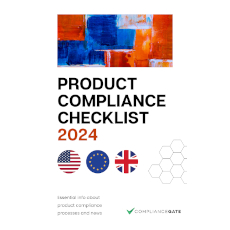
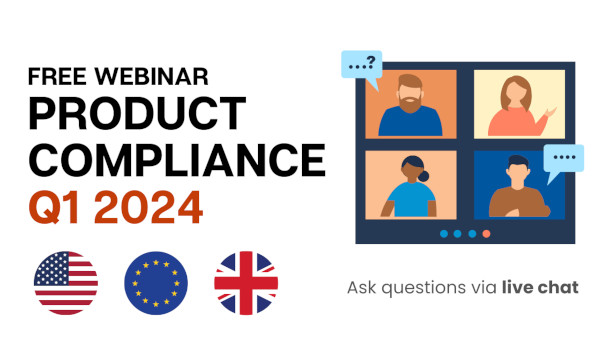
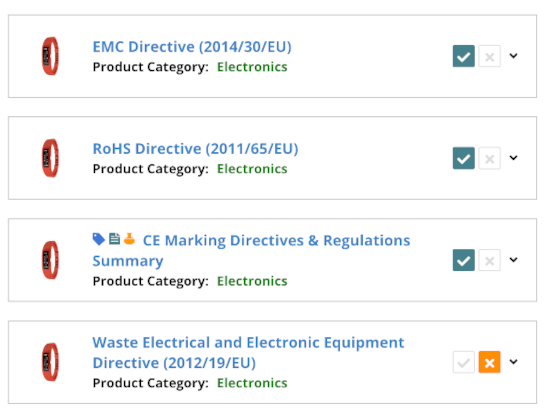




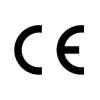
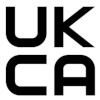




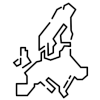



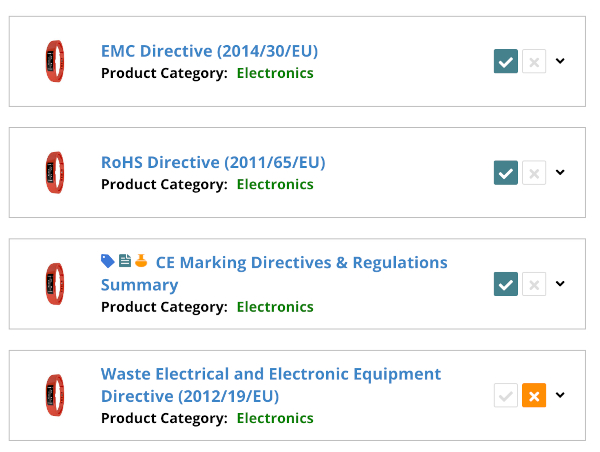

I’m struggling to find Maximum limits for Heavy Metals on dried fruit, related to Raisins and Currants. Kindly assist.
Strictly speaking, only lead, cadmium,mercury, barium and tin are usually considered as heavy metals. Antimony, arsenic selenium are metalloids. Titanium, chromium, manganese,cobalt, nickel, copper and zinc are first row transition metals and are found either side of iron, a very important metal for mammalian life. The difference between Cr III and Cr VI is that the latter has been found to be carcinogenic, but not the former(?) This comment is in response to Fredrik’s hesitancy with regard to what constitutes a heavy metal. I hope this is of help
Thank you John!
As a guitarist, I noted that the items quoted, with limits on nickel, do not include guitar strings; many of which have nickel coated windings around steel cores. A good review, thank you.